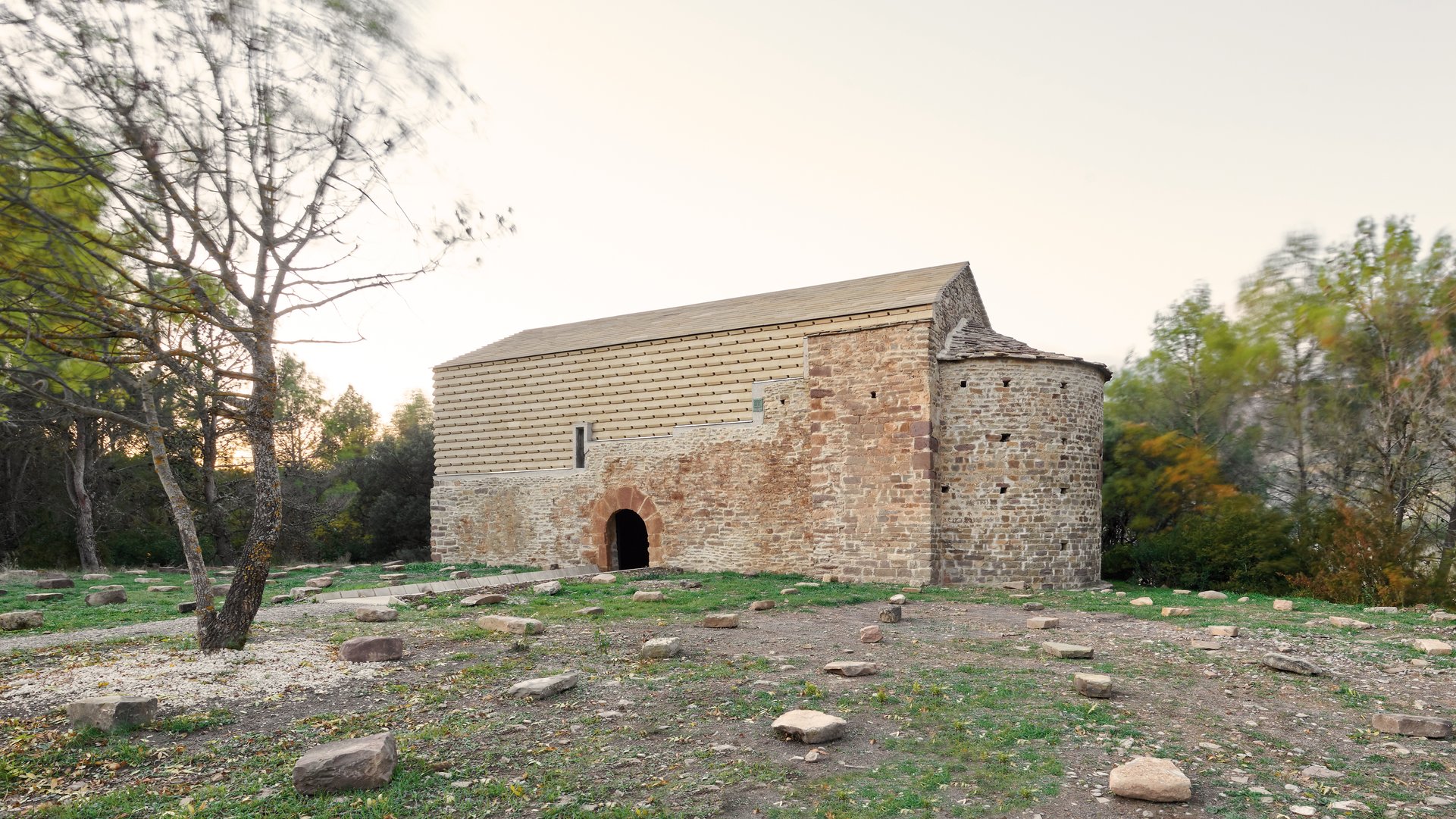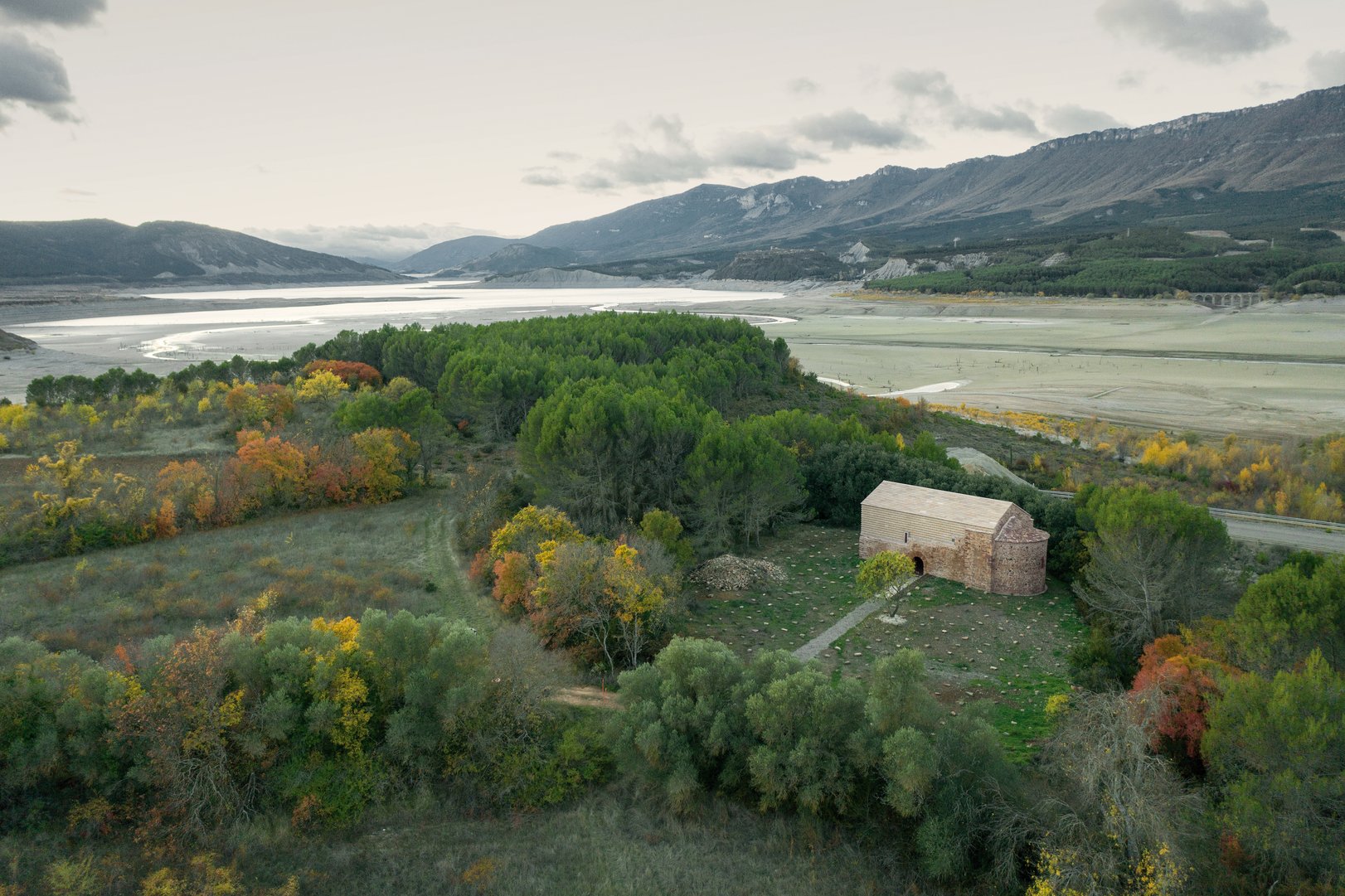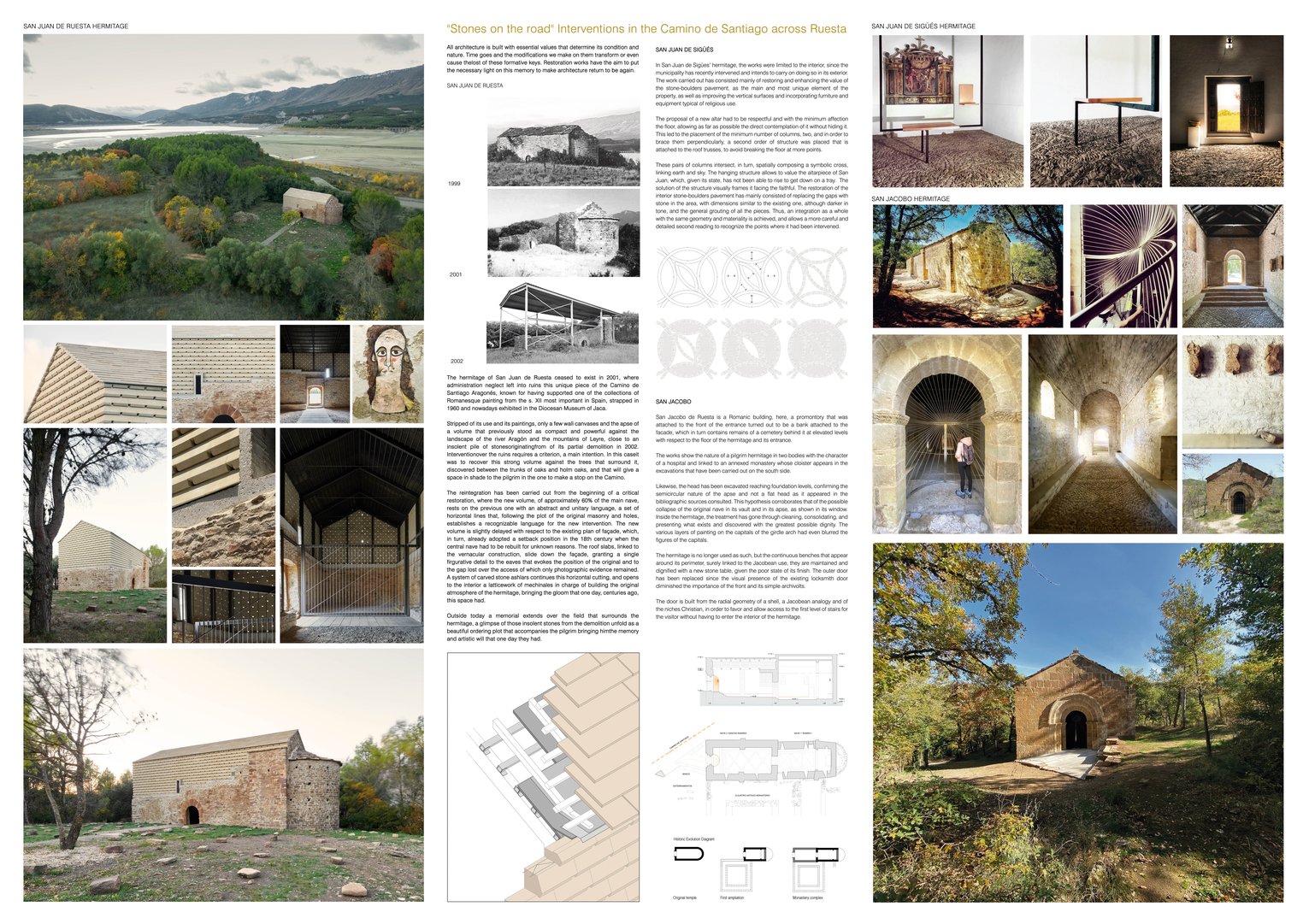

The hermitage of San Juan de Ruesta, at the foot of the Pyrenees, is a stopover for pilgrims on the Pilgrim's Way to Santiago de Compostela. Thanks to the careful intervention of Sebastián Arquitectos, the abandoned ruins have been transformed into a historical testimony that captivates visitors and preserves the local heritage of the region. The restoration is part of a master plan to revitalise the entire area around the Yesa reservoir.
SEBASTIAN ARQUITECTOS
https://www.sergiosebastian.es
Iñaki Bergera
Ruesta is a ruin, but a beautiful ruin, testimony of an important history that asks for being preserved, makes all who visit it fall in love, and reveals a territorial reality: the uninhabited Spain.
Since 2017, promoted by the Ebro Hydrographic Confederation and under the protection of the compensatory measures for the regrowth of the Yesa reservoir, several interventions are being developed in the heritage of the surroundings of the Aragon River.
The actions carried out have allowed to value and recover the Camino de Santiago (Way of St. James) as it passes through the village of Ruesta, as well as the restoration of the Centro St. of this town, its hermitages of San Jacobo and San Juan, the hermitages of San Juan de Sigüés, accompanied by a series of parallel interventions to recover the pavements and roads of the Via Tolosana and infrastructures to ensure their continuity such as a footbridge to cross the Regal River or a network of viewpoints and fountains on the Way of St. James.
All this works had been structured in two master plans elaborated by Sebastián Arquitectos. The first concerning the route of French Way of St. James through Aragon, promoted by the CHE, of which the southern line has already been studied and the analysis of the north line will begin through the Monastery of Leyre. The second a plan for the Recovery of the core of Ruesta, promoted by the Government of Aragon. Both have been concretized as several projects of execution and construction works with the support and confluence of the various national, regional and local administrations.
All this will allow the Camino de Santiago to become, once again, the cultural and social backbone of a territory that puts its hope in the revitalization of this way of exchange, as a fight against depopulation in a region especially pressed by this unfortunate phenomenon, but also as a way of conservation, protection, and enhancement of local heritage.




